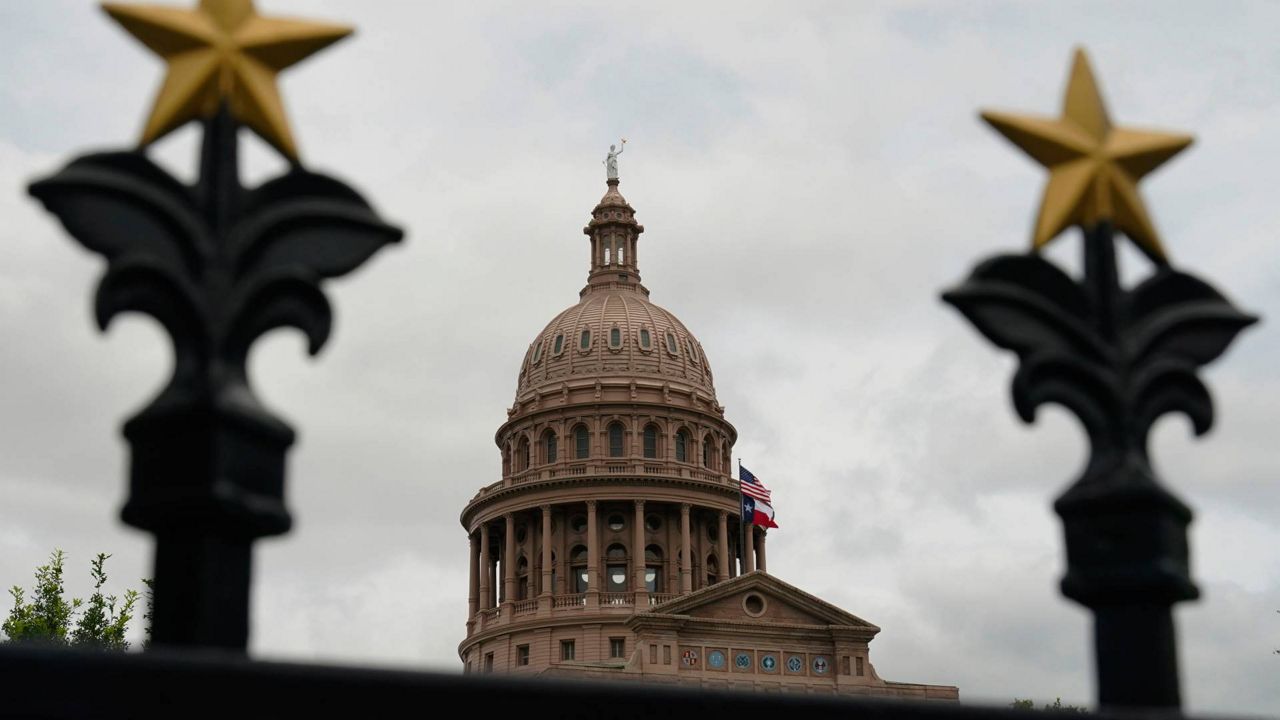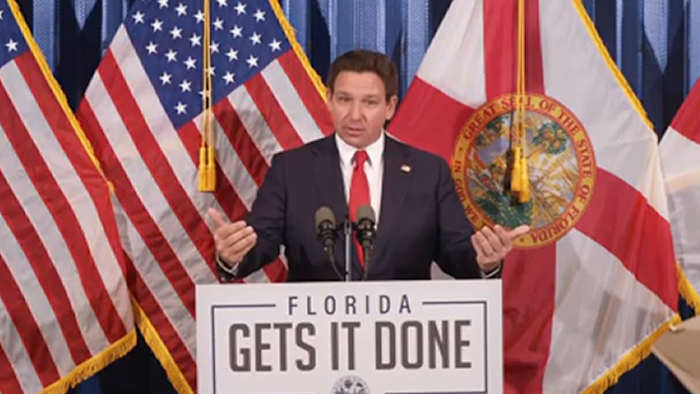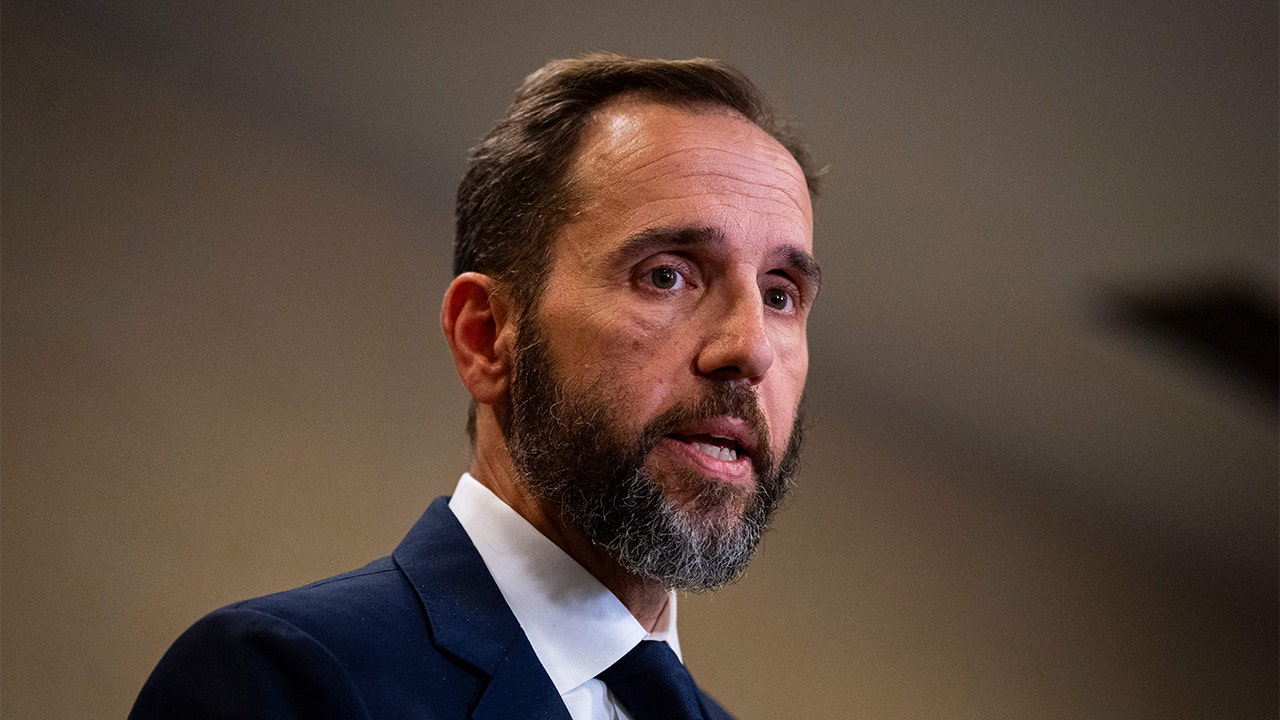Texas
Facing youth prison crisis, Texas lawmakers opt to build new facilities and funnel more kids to adult system

Sign up for The Brief, The Texas Tribune’s daily newsletter that keeps readers up to speed on the most essential Texas news.
The Texas Legislature convened this January facing a big task: fixing the increasingly unstable youth prison system.
Proposals on the table ranged from closing the state’s five remaining youth prisons and instead relying on local systems to rehabilitate children involved in criminal behavior to spending hundreds of millions of dollars to build additional state lockups for juveniles.
Ultimately, lawmakers opted for the latter, passing a budget with $200 million set aside to build two or three additional state-run prisons to hold at least 200 more youth. Currently, fewer than 600 juveniles are imprisoned in the state’s prisons.
In a crucial bill that authorizes the Texas Juvenile Justice Department’s continued existence after what is known as a sunset review, the Legislature also passed a provision requiring the transfer of some teenagers from TJJD into the harsher, more punitive adult prison system. Such transfers have already been increasing at TJJD’s discretion as the agency has sought to restore order within its prisons, including that of a 16-year-old who died by suicide shortly after he was sent to the Texas Department of Criminal Justice.
The measures will go into effect in September unless Gov. Greg Abbott vetoes them this month.
The decisions are a stark reversal from more than a decade of Texas trending away from imprisoning children. With TJJD’s history of scandals, state and county officials have shifted toward keeping more youth who’ve engaged in criminal behavior under local supervision, where research suggests they have the best outcomes. Since 2007, the state has closed eight prisons and shrunk the imprisoned youth population from about 5,000 to less than 600.
The youth still sent to TJJD, however, are often the most difficult to manage because of violent behavior, severe mental health needs or both. Although the sunset bill requires the agency to come up with a plan to find more local resources to keep children closer to home — and the budget gives a boost to local juvenile probation departments and diversion programs — lawmakers also pushed to build more facilities after the state projected more teenagers will be sent to TJJD in the near future after a pandemic-era slump.
Social justice groups have condemned both the plan to build new facilities and the plan to send more youth to adult prisons. The advocates have viewed the recent increase in transfers as a way for the beleaguered agency to throw away the kids with the highest needs. Building more prisons, they fear, will exacerbate the already extreme short-staffing for officers and lead to the same dire situations current prisons have faced.
“The new facilities are problematic, especially given all the problems that have been documented in the current facilities,” said Brett Merfish, youth justice director for Texas Appleseed. “They made it easier to send the youth from TJJD to TDCJ, so that also concerns me. Given the depth of problems, I don’t think this really addressed them adequately.”
For years, TJJD, which is under federal investigation, has been entrenched in repeated scandals over sexual and physical abuse, and the agency has consistently struggled to keep officers on the payroll. Last summer, short-staffing hit emergency levels, leaving children locked in cells up to 23 hours a day, using water bottles and lunch trays as toilets. Self-harm behavior skyrocketed among imprisoned youth, nearly half of whom spent some time on suicide watch.
[Almost 600 Texas youths are trapped in a juvenile prison system on the brink of collapse]
The agency has since scrambled to recruit and retain more officers, largely by implementing an emergency 15% pay raise. By April, agency staffing had risen to nearly 60%, according to state reports. Although it’s still a dramatically low number, the agency had only 44% of its officer positions filled in August 2022.
The new state budget, which gives the agency a significant boost, will continue those increased pay rates for juvenile prison officers. It also sets aside the hefty investment for new facilities in populated areas, which have been touted as a solution to the problems plaguing outdated rural facilities.
“These facilities are needed, and we are grateful to the Legislature for this funding,” said Barbara Kessler, a spokesperson for TJJD. “We hope to see these modern facilities designed and sited as quickly as possible.”
With the Texas Facilities Commission, TJJD must submit its plan for the new units by August 2024. Kessler said in an email Wednesday the agency would begin working with its partners to determine the number and locations of new prisons.
The size and scope of the units, however, are still unclear. Lawmakers said the new facilities may be designed to serve specific populations, including those with acute mental health needs, the most aggressive or violent youth, or girls. But while lawmakers have touted the benefits of adding smaller, specialized facilities (“I think it’s going to be a game changer,” said state Sen. John Whitmire, D-Houston), the only requirement put into legislation was for the agency to add a minimum of 200 beds.
Proposals from last year suggest about $200 million would cover two 100-bed detention centers, or three facilities with 40 to 56 beds. A House change to limit each facility to a maximum of 48 beds was stripped out in negotiations. Without specifics, advocates worry the new facilities will turn out to be two 100-bed units without specialization.
“To me that’s just perpetuating the problem and not fixing the ones we have,” Merfish said.
Opponents also worried additional prisons will lead to more children being locked up even if it’s not what is best for them.
“The more beds that we have, the more people we’ll find to fill those beds,” state Rep. Harold Dutton Jr., D-Houston, said in a March legislative hearing.
Outside of the budget, the key changes to TJJD come from the sunset bill. Senate Bill 1727 aims to reshape the agency’s board, and it requires the agency to come up with a plan to keep more kids closer to home by expanding funding to local services or using financial incentives to divert children away from the criminal system.
The bill would also require the agency to request transfers to TDCJ for many of its teens if they commit new crimes while in TJJD. Such crimes would include all first- or second-degree felonies, as well as the less severe but frequently pursued charge of assaulting a prison officer.
[“A way to throw kids away”: Texas’ troubled juvenile justice department is sending more children to adult prisons]
Senators have said such transfers are needed to restore order within youth prison walls and remove the most violent and disruptive kids.
“They’ve been sent for help and they’re preventing the other youth from getting help, so we’re trying to hold them accountable when they injure an officer or another youth,” Whitmire said in March when youth justice advocates pushed back on the transfers in a legislative hearing.
Kessler said the new requirement “codifies and strengthens what is generally existing practice” in TJJD, which sent significantly more youth to TCDJ last year than in previous years. She said it is difficult to predict how many more youth will be sent to TDCJ if the law takes effect.
“It supports our mission that youth assigned to TJJD be working toward better behavior,” Kessler said.
Youth justice advocates, however, fear the agency will wrongly push more of its most troubled kids off of its plate using the new requirement. They point to youth like Joshua Keith Beasley, the 16-year-old who died by suicide this year in TDCJ. Beasley had a lengthy history of mental illness and suicidal behavior and was first committed to TJJD at age 11 for kicking a school employee while on probation for vandalizing property. He was sent to TDCJ after hitting and spitting on a TJJD employee.
“When are we going to realize this isn’t criminal behavior?” Merfish asked. “First of all, they’re responding to trauma … but [also] if I’m grabbed by someone, I’m going to have a reaction. If they’re ‘out of control,’ then you’re not doing something right.”
Kessler said the agency will continue to work with youth to set them up for success within TJJD.
“The agency will continue to deescalate violent youths committed to its care, through treatment and programming, so they avoid additional offenses and have a chance at reform in the juvenile justice system,” she said.
Disclosure: Texas Appleseed has been a financial supporter of The Texas Tribune, a nonprofit, nonpartisan news organization that is funded in part by donations from members, foundations and corporate sponsors. Financial supporters play no role in the Tribune’s journalism. Find a complete list of them here.
Go behind the headlines with newly announced speakers at the 2023 Texas Tribune Festival, in downtown Austin from Sept. 21-23. Join them to get their take on what’s next for Texas and the nation.

Texas
Hazardous road conditions expected as North Texas snow event ends Friday morning

NORTH TEXAS – This week’s snow event will end with a “few flurries” during Friday’s morning commute, according to CBS News Texas meteorologist Jeff Ray.
“But roads will have frozen over,” Ray said.
Expect hazardous road conditions in the morning, as it will be “the worst” the roads have been since the event started on Thursday morning, Ray said.
Late in the morning, temperatures will rise above freezing, which will “help drivers get around the Metroplex,” Ray said.
A cold front is expected Friday, he said.
“We are going to have wind chills in the 20s all day,” Ray said. “By nightfall on Friday, temperatures will drop quickly and water will re-freeze on the roads across the evening. This ice will remain until mid-morning on Saturday before the sun and warmer temperatures in the mid-40s clear the roadways.”
CBS News Texas will continue to provide updates as information becomes available.
Texas
Hazardous travel expected as ice covers roads overnight in North Texas

Watch CBS News
Be the first to know
Get browser notifications for breaking news, live events, and exclusive reporting.
Texas
South Carolina women's basketball: Five Things to Watch – Texas A&M

South Carolina women’s basketball hosts its SEC home opener against Texas A&M on Thursday evening. Here’s how to watch and what to watch for.
1. Missing Ashlyn
South Carolina announced on Tuesday that junior forward Ashlyn Watkins will miss the rest of the season with a torn ACL. Staley let Watkins tell the team about her injury, and then the coaches have tried to push forward.
“We just keep it moving, try not to harp on it too much because it’s felt,” Staley said. “The more you move on, the more they move on – and our players have to move on. It’s a part of it.”
I broke down how South Carolina will try to replace Watkins here.
Staley said, “Only time will tell” the impact of Watkins’ absence, but it is definitely an opportunity for Maryam Dauda, Adhel Tac, and Sakima Walker to step into a new role.
“Sometimes, when you remove someone as big as Ashlyn from your equation, other people have an opportunity,” Staley said. “And what they do with that opportunity, usually, they do something pretty good with it. We’ll work with them, and we’ll be patient with them.”
2. Spurtability
South Carolina’s strengths this season have been its bench and its transition game. In the first two SEC games, South Carolina pulled away with the second unit on the court getting stops and getting out in transition.
Watkins, with her ability to rim run with or without the ball, was a huge part of that. Her absence isn’t going to stop the Gamecocks from running, especially at home. Even without Watkins, the Gamecocks had 15 fast break points on Sunday.
That quick-strike ability has Texas A&M coach Jni Taylor worried.
“We have a saying around here that says, ‘before you know it,’” Taylor said. “If you keep doing the right thing, keep putting your head down, keep grinding, you look up and before you know it, you’ll be where you’re supposed to be. Likewise, if you don’t come out ready, if you are pouting, if you are feeling sorry for yourself, before you know it, you won’t be where you’re supposed to be. That’s one of those things at South Carolina. They’re a really good team. They play really well at home. We will be, flashback of last year here, we’ll be down 15 to zero before we can bat an eye if we don’t come out ready to go.”
[Join GamecockCentral: $1 for 7 days]
3. (Dress rehearsal)
Nobody is going to say it out loud, but Thursday’s game is an important tune-up for the Sunday showdown against no. 5 Texas.
Is Tac ready to battle Kyla Oldacre? Can Dauda’s shooting pull Oldacre away from the paint? Is there enough rim protection to keep Rori Harmon from getting easy layups, or do they need to get creative? Who should guard Madison Booker?
It’s a familiar refrain in these parts. Get the game in hand early so you have the fourth quarter to look at some different lineups.
“We let our players play through some stuff, and then you’ve got to look at the scoreboard,” Staley said. “If we’re holding serve on the scoreboard, and we’re up, more lenient to leave them out there to give them some minutes. But, if the scoreboard moves in an unfavorable way, then you got to get combinations out there that’s going to move it the opposite way.”
Texas hosts no. 18 Alabama on Thursday night, so the Longhorns can’t afford to look ahead. But we can.
[USC-Texas WBB: Win tickets, parking]
4. Availability report
Maddy McDaniel and Sakima Walker were both listed as OUT on the Wednesday evening Availability Report.
McDaniel has not played since the holiday break after suffering a concussion. Walker has not played since the Iowa State game and hasn’t been available since the TCU game with an ankle injury. Both have started participating in practice this week but obviously are not yet full-speed.
Vanessa Saidu is listed as OUT for Texas A&M. She has yet to play this season. Amirah Abdur-Rahim is listed as questionable.
Side note: Because Watkins has been declared out for the season, she is not included on the availability report.
Get our new GamecocksW newsletter.
5. Scouting the Aggies
The Aggies are one of the three SEC teams that haven’t reached 10 wins yet. There are a lot of good players on the roster – anyone in the country would take Lauren Ware, Sahara Jones, and Janae Kent – plus a great scorer in Aicha Coulibaly, but the sum of the parts hasn’t been quite where it needs to be.
However, Texas A&M is coming off an upset of then-25th-ranked Ole Miss on Sunday. The win was a 60-58 rock fight in which Ole Miss shot 0-12 in the fourth quarter, but that fits Joni Taylor’s defensive mindset.
‘I think that we’ve been able to show really good spurts defensively of how we can impact the game,” Taylor said. “To hold Ole Miss or any team, for that matter, without a field goal in the fourth quarter is really impressive, and I think it just shows, again, what we are capable of.”
Coulibaly has been a thorn in the Gamecocks’ side before. She scored 32 points and grabbed six rebounds against the Gamecocks in the SEC tournament quarterfinals last season. Coulibaly had no problem getting to the basket and drawing fouls, going 13-15 from the line. And that was with Watkins and Kamilla Cardoso guarding the rim.
“Coulibaly is the one that we haven’t solved playing against her,” Staley said. “I do think they’re better. They’re playing more cohesive. They’ve got some bigs that do what bigs do. They have guards that are a year older, some transfers that have played in our league, so … formidable. And then, they’re coming off a big win against Ole Miss.”
Texas A&M freshman Taliyah Parker was a high school teammate of Tac’s at South Grand Prairie. Parker has appeared in all 14 games this season and averages 5.3 points and 2.4 rebounds.
The Ws
Who: #1 South Carolina (14-1, 2-0) vs Texas A&M (8-6, 1-1)
When: 5:00 EST, Thursday, January 9
Where: Colonial Life Arena, Columbia, SC
Watch: ESPN2
-

 Business1 week ago
Business1 week agoThese are the top 7 issues facing the struggling restaurant industry in 2025
-

 Culture1 week ago
Culture1 week agoThe 25 worst losses in college football history, including Baylor’s 2024 entry at Colorado
-

 Sports1 week ago
Sports1 week agoThe top out-of-contract players available as free transfers: Kimmich, De Bruyne, Van Dijk…
-

 Politics1 week ago
Politics1 week agoNew Orleans attacker had 'remote detonator' for explosives in French Quarter, Biden says
-

 Politics1 week ago
Politics1 week agoCarter's judicial picks reshaped the federal bench across the country
-

 Politics6 days ago
Politics6 days agoWho Are the Recipients of the Presidential Medal of Freedom?
-

 Health5 days ago
Health5 days agoOzempic ‘microdosing’ is the new weight-loss trend: Should you try it?
-

 World1 week ago
World1 week agoIvory Coast says French troops to leave country after decades

















